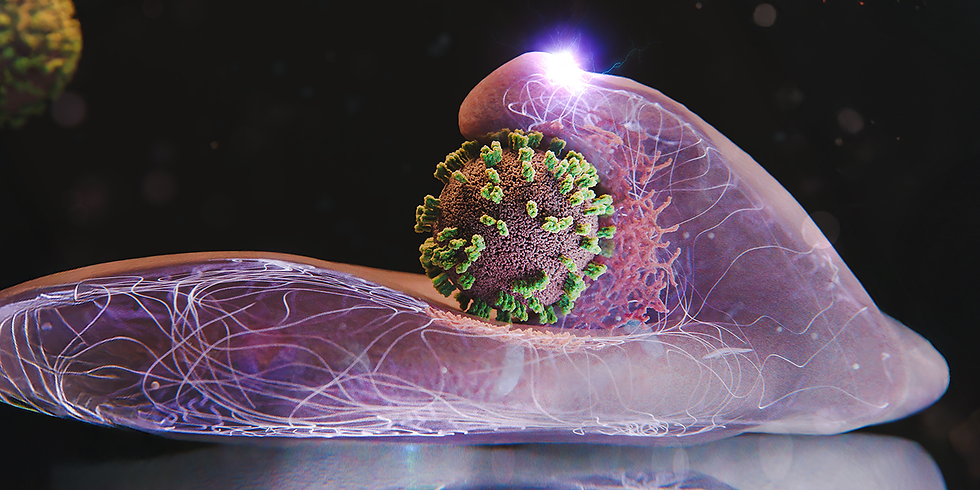A look back at medical advances in 2019 and the role played by animal research
- Ana Barros
- Apr 23, 2020
- 3 min read
Updated: May 1, 2020
While biomedical research is being asked to find solutions to the world’s current health emergency, it is worth remembering the wide range of advances in science that researchers continue to make.

Research often involves the use of animals and EARA has looked back over some of the important work done in Europe in 2019, both in basic research to better understand diseases and in the development of drugs and treatments
(see Medical Advances across Europe, listed by country, below).
On the world stage an historic milestone was reached in 2019 when the first vaccine against Ebola was approved in the EU. The vaccine, Ervebo, developed by Merck, was granted marketing authorisation by the European Commission following recommendations by the European Medicines Agency, after a series of successful clinical trials.
“It is a historic milestone and a testament to the power of science, innovation and public-private partnership,” said Ken Frazier, Merck chairman.
Read more about the Ebola vaccine on the EARA website.

Meanwhile, major developments in the USA, mean the prospects of pig-to-human transplants are just years away and could all but eradicate donor waiting lists. The work in involved the successful use of the gene-editing technique CRISPR-Cas9.
Medical advances across Europe
BELGIUM
Researchers at EARA members VIB, KU Leuven and UZ Leuven used mice to develop new antibacterial drugs.
DENMARK
A study led by researchers from Aarhus University, in collaboration with other institutions in Austria and Germany, found evidence suggesting that Parkinson's Disease originates in the gut.
A protein (alpha-synuclein) linked to Parkinson's Disease, was injected into the gut of rats (genetically modified to produce too much alpha-synuclein) which then spread from their gut to their brain.
FRANCE

Scientists have created an implant which, when applied as a wound dressing, can regenerate cartilage.
Using rats and sheep, the teams from Inserm and University of Strasbourg, observed that the innovative implant, called ARTiCAR, acts as a second skin promoting cartilage regeneration.
GERMANY
German researchers have minimised the main symptoms of Parkinson’s in a mouse model by using a drug already licensed for humans.
A team at the German Center for Neurodegenerative Diseases, Tübingen, and University Medical Center Göttingen, prompted significant improvements in affected mice with a drug called Emapunil - a human anxiety therapy drug.
ITALY
Using rats, researchers based primarily at EARA member, the University of Ferrara, working with Gloriana Therapeutics, have developed a treatment for epilepsy using a device implanted into the brain.
The protein-secreting device reduced seizures by 93 percent in three months and researchers hope to translate this technology for human use.
NETHERLANDS
Using macaque monkeys, a team from the Erasmus University Medical Center, has demonstrated that the measles virus can deplete stores of memory cells.
During a measles outbreak in the Netherlands in 2013, researchers also discovered that unvaccinated children who contracted measles experienced a substantial decrease in these cells.
NORWAY

In a study using zebrafish larvae, the Yaksi group at Kavli Institute for Systems Neuroscience, Norwegian University of Science and Technology found that cilia - miniscule waving hairs in the cavities of a brain - are essential for the brain to develop normally.
PORTUGAL
A team of scientists from EARA member, the Faculty of Pharmacy of the University of Lisbon, Portugal, and Tel Aviv University, Israel, has created a vaccine based on nanotechnology to treat skin cancer.
The findings show the nano-vaccine was effective in preventing the development of skin cancer in mice and in treating metastases.
SPAIN

A team from the Spanish National Cancer Research Centre (CNIO), Madrid, succeeded in curing pulmonary fibrosis disease in mice using a gene therapy.
(First authors of the paper, Paula Martinez and Maria A. Blasco)
SWEDEN
Using mice, researchers at the Karolinska Institutet, have discovered a new organ linked with pain sensation. The new organ has properties that represent a major shift in the understanding of pain sensation.
SWITERZERLAND
Swiss researchers, using mice, have developed a treatment for assisting pregnant women faced with one of the most common causes of death during pregnancy.
A team at ETH Zurich are working on a potential drug for previously untreatable preeclampsia, by using amlodipine to disrupt the signalling pathways that lead to thickened and less elastic blood vessels.
UNITED KINGDOM
Using rabbits, researchers at Imperial College, London, funded by the British Heart Foundation, have created a "pumping" patch that could help to repair the damage caused by a heart attack.
The patch contains millions of living, beating stem cells that are grown in a lab from a sample of the patient's own cells, which then turn into healthy working muscle. Tests in rabbits show it appears safe, with patient trials starting in the next two years.
Commenting on the advances made in 2019 EARA Executive Director, Kirk Leech, said: “Every year we see remarkable achievements by researchers across Europe and 2019 was no exception. Yet undoubtedly, without the use of animals, the pace of advances in biomedical research would be dramatically slower.”



